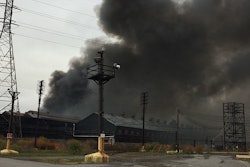Each year, approximately 48 million Americans become sick from contaminated food.
More diverse consumer demands and greater competition have driven food and beverage makers to produce more SKUs than ever before – and this has introduced greater complexity into their production processes and supply chains. Therefore, it’s imperative that food and beverage producers are proactive when identifying and resolving issues that lead to product recalls and contamination.
An enterprise-wide approach that embraces information-enabled technologies and automation can help you address food safety across operations while increasing productivity. It involves five key steps:
1. Get connected
The Connected Enterprise enables seamless connectivity and collaboration among the many people, processes and technologies that impact product safety and quality.
Transitioning to a Connected Enterprise first involves converging your operations technology (OT) and information technology (IT) systems into a single, unified network architecture. From there, you can implement technologies like mobile platforms, cloud computing and Ethernet that can help improve visibility into safety- and quality-related processes.
2. Secure your networks
Network security directly impacts food safety and quality, and a “security through obscurity” approach is no longer viable.
A defense-in-depth (DiD) security approach builds several lines of defense across multiple levels of your network infrastructure. It addresses internal and external security threats, and should serve as a natural extension of your manufacturing processes.
3. Employ a risk-based, preventive control program
Software can automate the collection and visualization of process control. This can replace slow and outdated paper-based, information-gathering methods and give you deeper insights into your manufacturing methods.
The right technology can help you apply a more proactive approach to your food safety program. This preventative approach can help you more easily comply with regulations through:
- Real-time monitoring of critical control points in your HAACP plan.
- Data trending and statistical process control.
- Corrective action logs.
- Records management and verification.
4. Implement product traceability
Globally, there’s a push for stronger traceability requirements, and in the U.S increased specifications are expected in upcoming Food Safety Modernization Act revision.
Implementing a supply-chain, track-and-trace system can help you comply with emerging regulations while protecting your products against counterfeits and diversions. It can also allow for more efficient product recalls and customer-targeted marketing programs. While tempting, designing a system in-house can lead to support difficulty and parts shortages. Consider utilizing a standardized, out-of-the-box system from a third-party vendor that can enable interoperability from the machine level to the enterprise and cloud levels.
5. Improve operational efficiency
Beyond compliance, a food safety program can be used to improve product quality, asset utilization, yield and energy usage. Take advantage of technologies that improve asset utilization to meet demanding production goals and support fast changeovers while also maintaining high product quality. These technologies include:
- Manufacturing intelligence tools use metric applications and data-rich dashboards to help you improve OEE while delivering more consistent batches, even as raw materials and processes vary.
- A process automation system with predictable batch processing can help you reduce process variability while achieving consistent product quality.
- Mixing optimization solutions can help manage process changes and ingredient variability to improve product consistency.
- A configurable line-control solution helps you manage large numbers of product varieties, packaging options, and new products and uses production analysis to help you monitor key quality metrics.
In the eye of the consumer
Remember, your brand and business are at stake in every food or beverage item you produce. Unresolved production quality and safety issues not only put consumers at risk, but could result in major financial tolls on your business.
Investing in a comprehensive approach to food safety is not only a win for your company, but will strengthen your image in the eyes of stakeholders.
Click here to learn more about best practices for food safety.





















